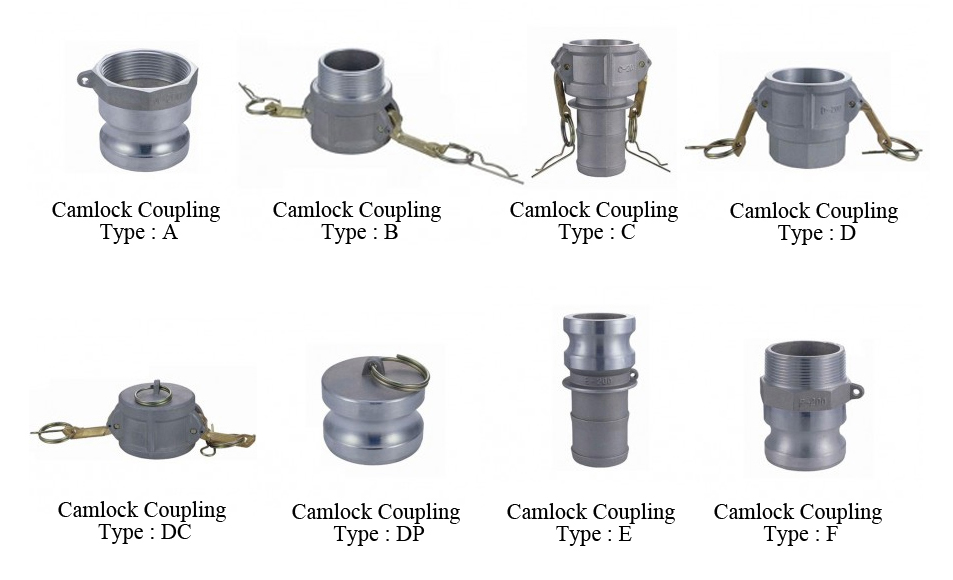Stainless Steel Camlock Coupling are widely recognized for their durability, resistance to corrosion, and ease of use in connecting and disconnecting hoses and pipes. These couplings are essential components in industries such as petrochemical, food and beverage, agriculture, and manufacturing. However, like all mechanical components, they are subject to wear and operational issues over time. Understanding how to troubleshoot common problems can save time, prevent accidents, and reduce downtime.
Leaking Connections
One of the most common issues users face with a Stainless Steel Camlock Coupling is leakage at the connection point. This can result from several factors:
Worn or Damaged Gaskets
The gasket inside the coupling is responsible for sealing the connection. Over time, gaskets can degrade due to exposure to chemicals, high temperatures, or repeated use. A worn gasket will not create a proper seal, leading to leaks. Always inspect the gasket before use and replace it if there are signs of cracks, hardening, or deformation.
Improper Assembly
A frequent but easily avoidable mistake is improper connection. Camlock couplings must be fully inserted and locked into place using the cam arms. If the arms are not locked down properly, or if debris prevents a tight connection, leaks can occur. Make sure both the male adapter and the female coupler are clean and properly aligned before locking.
Incorrect Gasket Material
Using the wrong gasket material can compromise the integrity of the seal. For example, a nitrile gasket might not withstand certain aggressive chemicals, while a Viton or EPDM gasket would be more suitable. Always ensure the gasket material is compatible with the fluid being transported.
Difficulty Engaging or Disengaging the Coupling
Sometimes, users struggle to lock or unlock the cam arms on a Stainless Steel Camlock Coupling. This issue can arise due to a number of causes:
Debris in the Coupling
Particulates such as dirt, sand, or metal shavings can accumulate inside the cam grooves or on the locking arms. These blockages can interfere with the locking mechanism, making it hard to engage or disengage the coupling. Regular cleaning of the coupling parts is essential to prevent buildup.
Damaged Cam Arms or Grooves
If the cam arms or grooves are bent, cracked, or otherwise damaged, the coupling may not function smoothly. Stainless steel is strong, but repeated stress or accidental impact can cause structural damage. If any part is damaged, it should be replaced immediately to ensure a secure connection.
Excessive Pressure in the Line
Trying to disconnect a coupling while the line is still under pressure can be extremely difficult and dangerous. Always relieve pressure in the hose or pipe before attempting to disengage the coupling. This also helps to prolong the life of the cam arms and seals.
Corrosion and Material Degradation
Although stainless steel is highly resistant to corrosion, it is not immune, especially in harsh environments:
Exposure to Harsh Chemicals
Certain chemicals can degrade stainless steel over time, especially if the alloy grade is not suitable for the specific application. Make sure to select the right stainless steel grade (such as 316 for marine or highly corrosive environments) to avoid premature failure.
Environmental Conditions
Areas with high salt content, like coastal regions, or industries involving acidic vapors, can accelerate corrosion. Regular inspection and maintenance of the Stainless Steel Camlock Coupling in such conditions is necessary. Applying anti-corrosive coatings can also provide added protection.
Coupling Slips or Disconnects Unexpectedly
This issue poses significant safety risks and should be addressed immediately:
Incomplete Locking
If the cam arms are not fully engaged, the coupling may appear secure but can disconnect under pressure. Operators should be trained to ensure the arms click securely into place and remain locked during operation.
Worn or Loose Fittings
Wear and tear can cause the locking mechanism to loosen over time. Springs and pins within the cam arms may degrade, reducing their holding strength. Inspect these components periodically and replace them when signs of wear appear.
Vibration and Movement
High levels of vibration, common in industrial environments, can cause fittings to work loose over time. Consider using safety clips or locking pins to add an extra layer of security to the connection, especially in mobile or high-vibration applications.
Compatibility Issues
Sometimes problems arise simply because the components being connected are not compatible:
Different Metal Types
Using a Stainless Steel Camlock Coupling with a fitting made from a different metal can cause galvanic corrosion. This type of corrosion occurs when dissimilar metals are in contact in the presence of an electrolyte, such as water. Always ensure that the metals used in your system are compatible or isolated appropriately.
Inconsistent Sizing
Camlock fittings come in various sizes, and even slight inconsistencies can cause poor fitment or leaks. Double-check sizing specifications to ensure all parts of the system match precisely.
Maintenance and Best Practices
Proactive maintenance can prevent many of the issues associated with Stainless Steel Camlock Coupling:
Routine Inspection
Regularly inspect couplings for visible signs of damage, wear, or corrosion. Pay particular attention to cam arms, gaskets, and the mating surfaces of the coupler and adapter.
Lubrication
Apply appropriate lubricant to the cam arms and moving parts to ensure smooth operation and to protect against wear. Avoid over-lubricating, especially with petroleum-based products, which may degrade rubber gaskets.
Proper Storage
When not in use, store camlock couplings in a clean, dry environment. Keep dust caps and plugs in place to prevent contamination and mechanical damage.
Operator Training
Ensure that personnel using the equipment understand proper assembly and disassembly procedures. Proper training can greatly reduce incidents of misuse or incorrect installation.
Conclusion
Stainless Steel Camlock Couplings are highly reliable when used and maintained correctly. Most common problems—such as leaking, corrosion, difficulty in locking, or accidental disconnection—can be traced to issues like wear and tear, improper handling, or environmental conditions.
